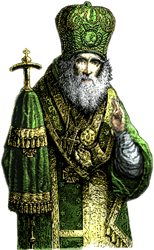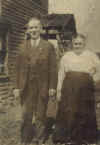 W
E L C O M E
W
E L C O M E
If you are related or have information concerning our family, I would very much want to hear from you
O’HARA FAMILY HISTORY....are you related? If so, please contact me.
I’ve always wanted to research the O’Hara Family and a couple of years ago, I seriously took on the project. My computer and the Family Tree Maker Program have helped organize all the information - I have approximately 600 names now. The family of Thomas and Mary (Rouse) O’Hara along with sons, *Patrick and Thomas emigrated from Ireland and this winter I found that a son Edward stayed in Ireland. Now, I am searching to find where and when they departed Ireland, what ship brought them to the USA and where they embarked this country. The Irish after embarking in this country were typically sent on the railroad to Altoona, Pennsylvania (an Irish Emigration Center) where they picked a job and made arrangements to move to that job location. O’Hara Family descendants married with the following families (this is not a complete list): Rochford, Carr, Glasser, Kramer (later changed to Cramer), Patrick, Cunningham, Crishal, Lyden, Grady, Deihl, Shingledecker, Kaufman, Filbert, Schabel, Marrie, Salvatore, Groza, Stefan, Brennan, etc.
MORE INFORMATION: We are family of *Patrick "Ginger" O’Hara (born 1858 in possibly County Cork or County Antrum, Ireland), married Elizabeth "Liz" Rochford on April 23, 1883 in Youngstown, Ohio where they lived there lives and most of their family remained and still live in the area. Patrick was nicknamed "Ginger" by his fellow mill workers because of his red hair. The Mahoning County Probate records state that Pat and Liz had the following eight children: Thomas Peter, Annie, Mary, John, Peter, Lillian, Agnes and Edna.
Click Picture to Enlarge
Patrick & Elizabeth
Our grandfather, Thomas Peter (born March 12, 1884), married Minnie Katherine Kaufman (also spelled Kauffman) on June 11, 1908 in Youngstown, Ohio. Tom and Minnie had the following seven children: Edward, Anna Sophia, John Charles, Mary Louise, Thomas William, Robert Henry and James Patrick.
I NEED SOME HELP! Can you help me with the answers to any of the following questions. Where in Ireland did our family live? Name of the port from which they departed Ireland. Name of the ship which transported them here. Name of the port where they entered this country.
The 1900 US Census has Patrick O’Hara born 3/1857, 49yr, married 17yr, mother & father born in Ireland, immigration - 1877 while the 1920 US Census has him 60yr old, immigration 1874 (the handwriting is hard to read and the mind is the first thing to go), but I do have a three year bracket of immigration time period. (My guess is that it is 1877.) He petitioned for citizenship in 1883. (The librarian commented today while I was working on this research - 5 years after he come into the country...it sounded like the typical length of time to petition for citizenship.) With this information, I am not coming up with answers to my questions. Everything simply says "Ireland" - birth certificates, death certificates, obituaries, etc.
Please think on this and if there are any old letters, paperwork, pictures, books, a family bible, etc. that you may have of your parents or grandparents, look through them, read them and if you can shed any light onto this research, e-mail us or call me at 330-799-9879 - I work M-F till 5pm. If you do find any picture/s of our grandparents or great-grandparents which you would share for this Family History project, I would like to borrow it/them to make a copy.
(If you are interested in helping with the research, maybe we could meet at the main library and search through microfilm for death and birth records...kind of dull work, but often times give names of other family members to help put this big PUZZLE of a Family Tree together. Thank you for your time in reading this and I hope you learned something about our family.)
I look forward to hearing from you - barbo43@sbcglobal.net
BARBARA (3/17/02)
A LITTLE IRISH HISTORY
Originally Ireland was divided into four Districts or Regions. The northern most one was ULSTER, composed of County Antrim; County Down; County Londonderry; County Donegal, County Tyrone; County Armaugh and County Cavan. County Cavan is no longer alligned with the others.
I am not sure of the exact boundaries, [which have undoubtedly changed] but this is the section that still belongs to Great Britain and is called Northern Ireland [or the Six Counties.]
In general, this is PART of the history of the region. Cromwell conquered Ireland in the 1600s, and attempted to eliminate the Catholics. He made his version of Protestism the State Religion, and outlawed the Catholic Church. He eliminated the Catholic Landholders, and tried to eliminate or convert the Catholic Peasants.
In Ulster, Cromwell imported some of the Calvinists [mostly Presbyterians] from Scotland, and gave them the Catholic Land. Ulster was famous for its hand woven linen, so it had an economy based on cottage weaving [hand looms in the home.] Once the textile industry mechanized and developed in England, and cotton could be produced cheaply from North America instead of India, the Northern Ireland economy crashed.
They imported the linen seed from America, and those ships took many of the Scotch Irish to America in the 1700s. At that point they were just called "Irish;" the Scotch Irish name came later to distinguish this Protestant group from the later Catholic Irish emigrants, especially the "famine Irish."
Even though they were Protestant, the Scotch Irish had their grievances with the British, and many historians point to their hatred of the British as one cause of the Revolutionary War. Remember, the Church of England [Anglicans in America] became the State Church after Cromwell's son was deposed, and the Monarchy was restored in England. Religion [as well as economics] was a motivating factor with the Scotch Irish, and and the entire church often migrated to America, complete with their minister.
Because the British Influence was strongest here in Northern Ireland, you find it reflected in the names and customs of the Irish or Scotch Irish who emigrated to America. Any Catholics Irish emigrants from this area would have been likely hate the British, and make a point of it.
Many of the Scots who came to America were prisoners from the Jacobite uprising of 1745, "transported" to America. Their families and others from the Highlands also emigrated. They also hated the British.
The Catholics in Southern Ireland also hated the British, with good reason, and there were always revolts and riots and "troubles," which still last today. They especially hated the Great British Landlords, many of who were absentee Landlords, and these landlords were often murdered. Even after some Protestant Irish became landlords, the Irish Aristocracy was considered "second class" in the British House of Lords.
Mostly the Catholics were the poorest peasants. living on potatoes and milk. Few owned land. Many of the men joined the British Army because it provide some sort of living. Others migrated to England, which needed workers in the newly developed textile industry and coal mining industry. It was a short cheap trip to Liverpool and most of the early industry was located in that area.
Most of the middle class tradesmen, doctors, government workers, and all the religious ministers, were British or Protestant Irish. So were the gentry.
The Catholics, however, especially in the south, did manage to support a Catholic Church and priest. The Catholic priest might be an authority to his flock, but he was considered by the British establishment to be lower class simply because he was Catholic.
This was still pretty much the situation up until the Great Famine in 1848.
This link will take you to another OHara site with some interesting information http://oharas.com

